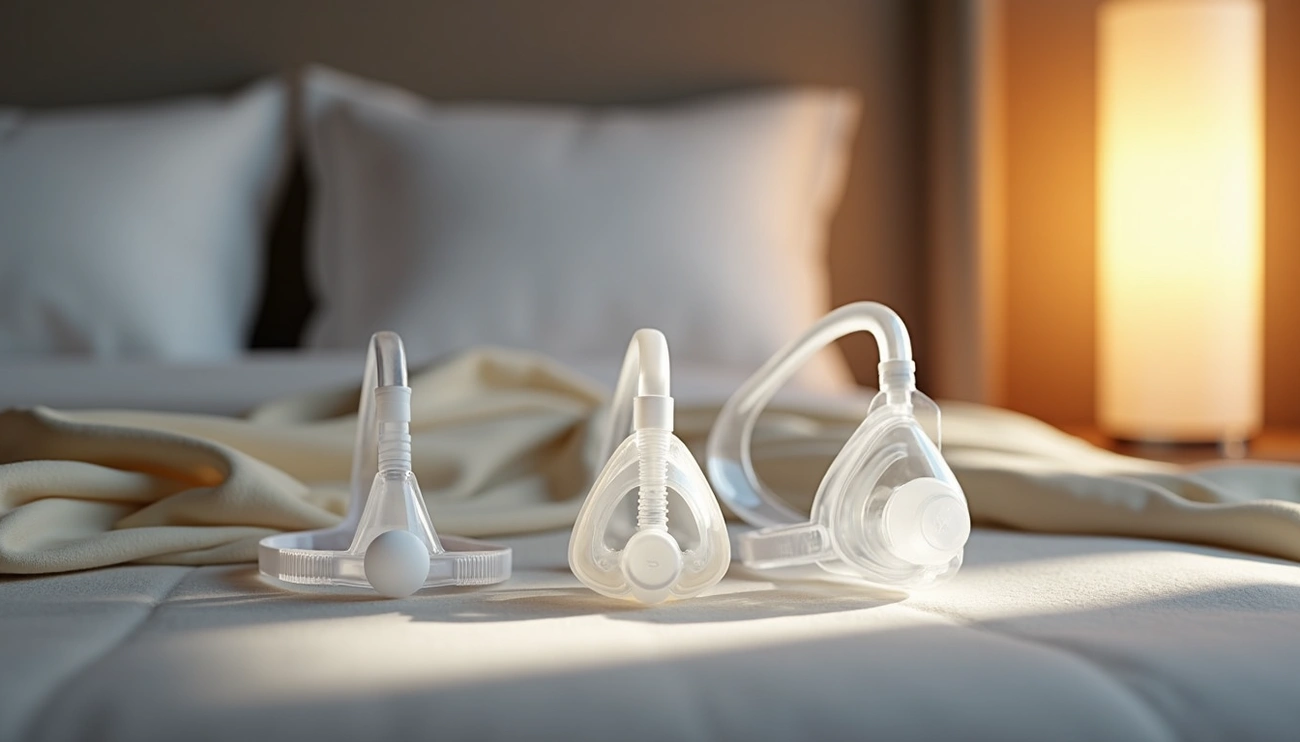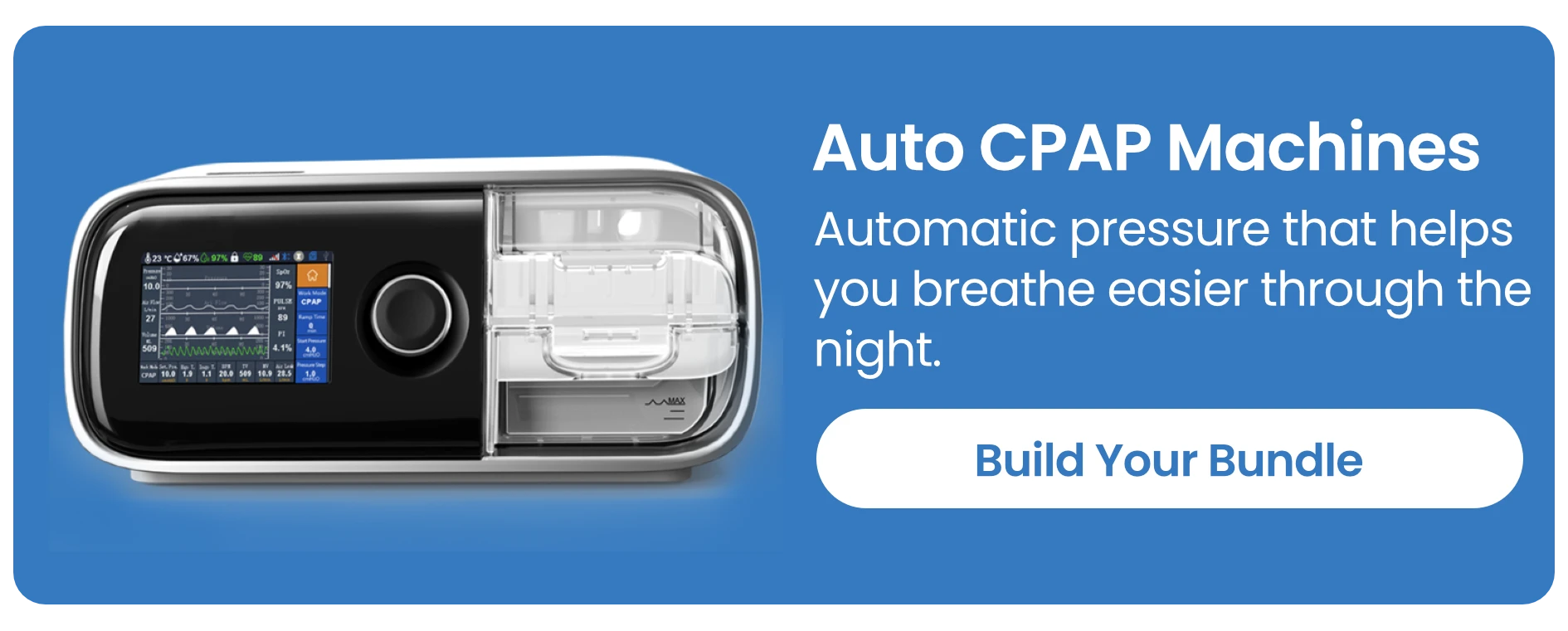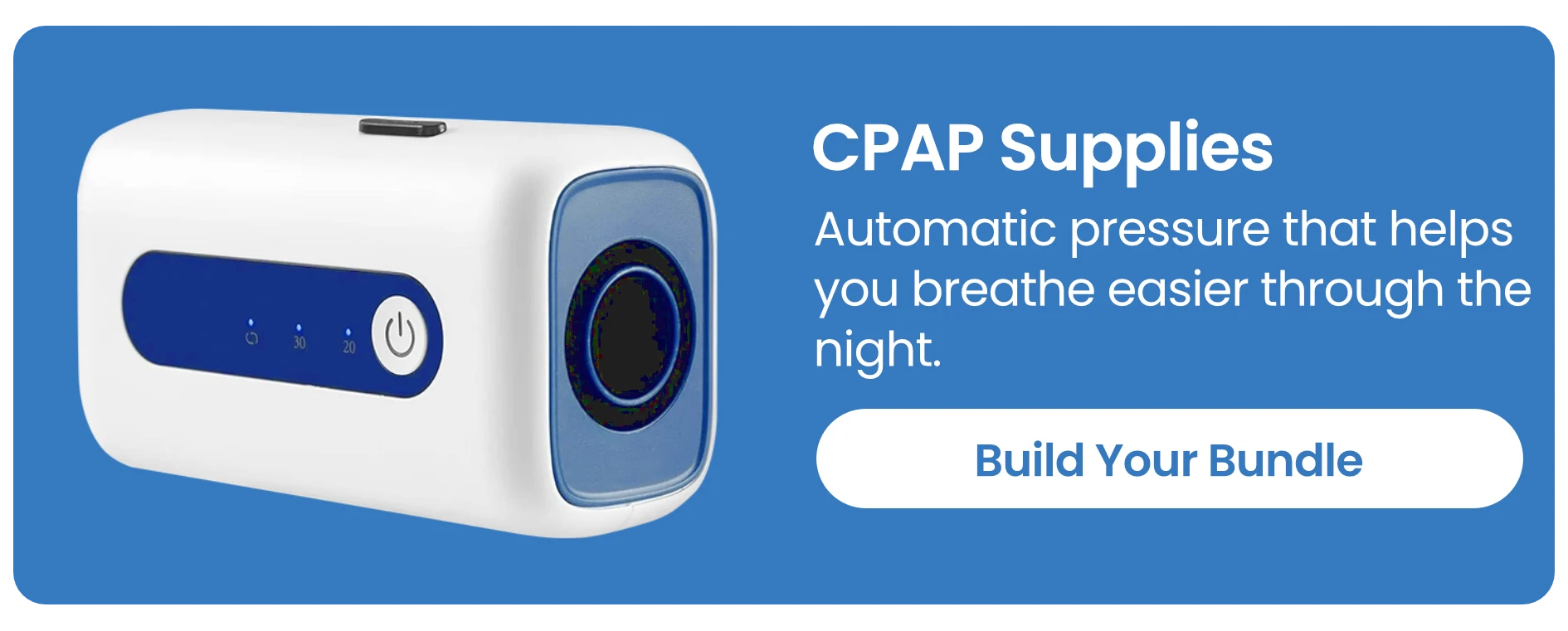How to Choose the Right CPAP Mask: A Guide to End Red Marks and Air Leaks

Did you know that 50-80% of CPAP users struggle with mask discomfort at some point during their therapy?
Waking up with red marks on your face or being disturbed by annoying air leaks can make using your CPAP machine feel like more trouble than it’s worth. Understanding different cpap mask types is the first step toward solving these common frustrations. From the popular nasal mask cpap machine setups to full-face options, finding your perfect match isn’t just about comfort—it’s about ensuring your therapy actually works.
Unfortunately, many patients give up on their CPAP therapy because of mask-related issues, with approximately 30-50% abandoning treatment within the first year. This happens because they haven’t found the right mask for their unique needs.
Thankfully, with the right knowledge about mask designs, fitting techniques, and maintenance practices, you can transform your CPAP experience from a nightly struggle to a seamless part of your sleep routine. In this comprehensive guide, we’ll walk through everything you need to know about selecting the perfect CPAP mask to stop face marks and air leaks forever.
Understand the Different CPAP Mask Types
Choosing the right mask is crucial for successful CPAP therapy. With several designs available in today’s market, understanding the differences between CPAP mask types helps you find the perfect fit for your specific needs.
Nasal masks: coverage and airflow
Nasal masks cover your nose from the bridge to your upper lip, creating a triangular or oval-shaped seal. These versatile options deliver indirect, natural airflow to your airways while maintaining a secure fit.
Ideal for:
- Users who need higher pressure settings
- Side sleepers and active sleepers
- Those who want a balance between minimal contact and stability
One significant advantage of nasal masks is their ability to handle higher pressure settings more comfortably than nasal pillows since they distribute airflow more evenly. Additionally, they come in various styles to accommodate different facial features [1].
However, nasal masks aren’t suitable for everyone. Mouth breathers will struggle unless they use a chin strap to keep their jaw closed. Furthermore, those with nasal blockages, deviated septums, or sinus conditions might find these masks ineffective during congestion [1].
Nasal pillow masks: minimal contact
Nasal pillow masks represent the most lightweight and compact option, featuring soft pillows that seal directly at your nostrils. This design creates minimal facial contact while directing airflow precisely where needed.
Benefits include:
- Claustrophobia-friendly design with maximum visibility
- Ideal for beard or mustache wearers
- Perfect for glasses wearers who read or watch TV before sleep
- Excellent for side and stomach sleepers [2]
Nevertheless, these masks have limitations. Their direct airflow delivery makes them less comfortable at higher pressure settings, potentially causing nasal dryness or irritation. Mouth breathers would also need a supplemental chin strap [3].
Full-face masks: for mouth breathers
Full-face (oronasal) masks cover both your nose and mouth, creating a seal from the bridge of your nose to below your lower lip. These masks provide the most coverage and consequently offer excellent stability for therapy.
Best suited for:
- Mouth breathers or combination breathers
- Users with frequent nasal congestion or allergies
- People requiring higher pressure settings
- Back sleepers [4]
Despite their advantages, full-face masks present challenges. Their larger surface area increases the likelihood of air leaks, particularly around the eyes. Moreover, the mask bulk makes them less ideal for side or stomach sleepers [1].
Hybrid and oral masks: niche options
Hybrid masks combine elements of different mask types to address specific needs. They typically feature nasal pillows or cushions for the nose while also covering the mouth, providing the benefits of full-face masks with less bulk.
Key features:
- Less intrusive than traditional full-face masks
- No pressure on the nasal bridge
- Excellent for combination breathers
- Good option for those who find traditional masks claustrophobic [5]
Oral masks represent another specialized option. These fit only over the mouth, bypassing the nose entirely. They’re particularly valuable for patients with nasal obstructions, though they’re less commonly prescribed [6].
Choosing between these mask types ultimately depends on your personal needs, including your breathing patterns, sleep position, pressure requirements, and comfort preferences. Many CPAP users try several styles before finding their perfect match.
How to Match a Mask to Your Sleep Style
Your sleep habits are as unique as your fingerprint, and finding the perfect CPAP mask requires considering your personal sleeping style. Unlike one-size-fits-all solutions, matching the right mask to your individual needs ensures better therapy compliance and fewer disruptions throughout the night.
Side sleepers vs. back sleepers
Side sleeping represents the most common and generally recommended position for sleep apnea patients, given that research shows more than 50% of people with sleep apnea experience worse symptoms when sleeping on their back [7].
For side sleepers, the primary challenge is maintaining a proper seal when your face presses against the pillow. Accordingly, smaller mask profiles work best:
- Nasal pillows: Ideal primary option due to minimal contact with your face and lightweight design [7]
- Nasal masks: Good alternative with soft, flexible headgear to maintain seal [8]
- Full-face masks: Generally less suitable but workable if specifically designed with minimal bulk and top-of-head tubing [7]
Back sleepers face fewer mask constraints since the back of the head rests on the pillow rather than the face. Consequently, all CPAP mask types remain viable options [8]. Albeit the most accommodating position for mask variety, back sleeping is considered the least favorable position for sleep apnea itself, as gravity can pull tissues downward and contribute to airway collapse [9].
Stomach sleepers require special consideration. Given that most of your face contacts the pillow, nasal pillow masks stand out as the clear winner due to their compact design and minimal surface area needed for maintaining an effective seal [8].
Dealing with facial hair
Beards, mustaches, and other facial hair create specific challenges for CPAP users, primarily because hair may prevent a strong mask seal, resulting in troublesome air leaks [10]. Instead of shaving, consider these adaptations:
First, mask selection matters significantly. Nasal pillow masks excel for beard wearers as they sit beneath the nose and form seals inside the nostrils, minimizing interference from facial hair [11]. For full beards, the AirTouch F20 with memory foam cushion performs better than silicone alternatives by conforming more effectively to facial contours [11].
Furthermore, keeping facial hair well-maintained helps immensely. Regular trimming (especially where the mask seals), conditioning beard hair to keep it soft rather than wiry, and thorough cleansing before bedtime all improve seal quality [10].
Glasses and claustrophobia considerations
For CPAP users who wear glasses, mask interference can impact daily activities like reading or watching TV before sleep. Specifically, nasal pillow masks provide optimal compatibility with glasses, offering minimal facial coverage while leaving the upper face unobstructed [12].
Claustrophobia presents a significant barrier to CPAP therapy for many patients. Surprisingly, mask preferences vary among claustrophobic users:
- Some find nasal pillow masks most comfortable due to their lightweight design and minimal facial contact [13]
- Others prefer nasal masks since they don’t cover the mouth [13]
- Some claustrophobic patients unexpectedly prefer full-face masks because they avoid direct contact inside the nose [14]
To overcome claustrophobia, try gradual desensitization: wear your mask during daytime activities like watching television, starting with short periods and slowly increasing duration until comfortable [8].
By matching your CPAP mask to your unique sleeping style, you’ll maximize both comfort and therapeutic effectiveness, ensuring better sleep quality and treatment compliance over time.
Preventing Air Leaks with the Right Fit
Nearly half of former CPAP users quit therapy partly because it was “hard to keep a mask seal” [15]. Air leaks not only cause discomfort but can significantly reduce the effectiveness of your treatment. Even small, barely noticeable leaks lower the prescribed air pressure level, potentially allowing apnea events to occur despite using your machine [16].
Why leaks happen
Air leaks typically result from several factors. Initially, improper mask fit is the most common culprit—your mask should fit securely without being too tight or too loose [17]. Unfortunately, worn or damaged components can create leaks, as can dirt, lotion, or skin oils accumulated on the cushion [17].
Other leak causes include:
- Mouth breathing while using nasal masks [17]
- Facial hair interfering with the seal [17]
- Side or stomach sleeping positions [17]
- High air pressure settings [17]
- Personal characteristics like aging, higher BMI, or conditions like COPD [17]
How to size your mask correctly
Finding your correct mask size is essential for preventing leaks. Most manufacturers offer printable sizing templates or fitting guides to help determine the right cushion size [18]. To measure for a full-face mask, check the distance from your nose bridge to the indent below your bottom lip [18].
First thing to remember: try on your mask while lying in your usual sleep position, as facial contours change in different positions [19]. Your respiratory therapist should help adjust without overtightening straps [15]. In fact, headgear that’s too tight won’t fix sizing issues and may actually cause more leaks [16].
Top-of-head vs. front-of-face tubing
For active sleepers who change positions frequently, masks with connections at the top of the head help prevent tubing entanglement [20]. These designs reduce the likelihood of dislodging your mask as you move [21]. In contrast, front-of-face tubing might cause more disturbance for side sleepers as the tube can press against pillows, creating leaks.
Using CPAP pillows to reduce pressure
CPAP pillows—not to be confused with nasal pillow masks—are specially designed with cutouts and curves to accommodate your mask [6]. These pillows offer several key benefits:
- They reduce mask leaks by providing space for your mask and hose [22]
- They prevent your mask from being pushed against your face [22]
- They help maintain proper neck alignment [6]
- They make side sleeping more comfortable with mask accommodation [23]
Most CPAP pillows feature ergonomic designs with memory foam and adjustable heights for customized support [24]. Sooner or later, investing in a quality CPAP pillow can improve both comfort and therapy effectiveness, especially for side and stomach sleepers [6].
Stop Face Marks and Skin Irritation
Uncomfortable skin marks and irritation are among the most common reasons people abandon their CPAP therapy. Even with the ideal mask type, these persistent issues can make consistent use challenging. Fortunately, multiple solutions exist to protect your skin while maintaining effective treatment.
Choosing soft materials and padding
Material selection plays a fundamental role in skin comfort. Memory foam cushions offer an excellent alternative to standard silicone, especially for patients with sensitive skin. These cushions mold to facial contours, creating a personalized fit that reduces pressure points and subsequent marks. For instance, the AirTouch F20 and AirTouch N20 masks feature breathable memory foam designed to adapt to individual face shapes.
Some manufacturers offer versatile mask frames compatible with both silicone and memory foam cushions, allowing you to switch between materials based on your comfort needs. Those who cannot tolerate silicone might find these alternatives particularly valuable, as silicone allergies often manifest as skin irritation.
Using mask liners and gel pads
Mask liners create a protective barrier between your skin and mask cushion. These accessories come in various forms:
- Disposable liners (like RemZzzs) – Made from natural cotton fibers, these absorb oils and moisture that irritate facial skin. They should be replaced daily and typically come in 30-day supplies.
- Reusable liners (like Silent Night) – These fabric liners can be washed and reused for 6-8 days.
- Gel pads (like Snugell or Gecko nasal pads) – These ultra-soft pads specifically target the bridge of the nose and can last up to 15 uses with proper care.
Beyond preventing irritation, these products often improve mask seal quality simultaneously, addressing both comfort and effectiveness concerns.
Adjusting strap tension properly
Overtightening headgear straps remains a primary cause of facial marks. Your mask should feel snug yet comfortable—not glued to your face. For most nasal mask styles, there should be enough slack to pull the mask about an inch away from your skin.
When adjusting, aim for equal tension across all straps. Remember that the mask cushion inflates slightly once air pressure begins, creating a better seal without excessive tightness.
Barrier creams and skincare tips
Applying moisturizer helps protect sensitive skin, although petroleum-based products should be avoided as they can degrade mask materials. Consider using fragrance-free, non-petroleum moisturizers at least 30 minutes before bedtime to allow full absorption.
For persistent issues, barrier creams designed specifically for CPAP users can reduce irritation. Products like RoEzIt create a protective layer without compromising your mask seal. Coupled with proper face cleaning before mask application, these skincare steps significantly enhance comfort throughout therapy.
When to Replace or Upgrade Your Mask
Even the best CPAP mask types eventually wear out with nightly use. Regular replacement ensures optimal therapy and prevents common issues from developing.
Signs your mask no longer fits
Watch for these warning signals that indicate it’s time for a replacement:
- Recurring air leaks despite proper adjustment
- Cushion feeling sticky or appearing discolored
- Mask slipping or requiring excessive tightening
- Persistent skin irritation or pressure marks
- Musty odor that remains after cleaning
- Visible cracks, tears, or damage to any component
- Returning symptoms of sleep apnea
How often to replace parts
Different mask components have varying lifespans:
- Cushions/nasal pillows: Every 1-3 months [25][26]
- Mask frames: Every 3 months [25]
- Headgear/straps: Every 6-9 months [25][26]
- Complete mask: No later than 12 months if parts haven’t been replaced individually [27]
Insurance typically covers scheduled replacements of CPAP supplies, although coverage policies vary [25]. Always check with your provider about their specific replacement schedules.
Warranty and recall checks
Most manufacturers offer 90-day warranties for CPAP masks [2][28]. Furthermore, these warranties typically exclude damage from improper use, smoke exposure, ozone cleaning, or regular wear and tear [29].
Occasionally, safety issues prompt recalls. For instance, the FDA recently classified certain ResMed masks with magnets as Class I recalls—the most serious type—due to potential interference with implanted medical devices [30]. Stay informed by registering your equipment and periodically checking manufacturer websites for safety notices.
Conclusion
Finding the right CPAP mask transforms your sleep therapy experience from a nightly struggle to an essential part of your wellness routine. Throughout this guide, we’ve explored various mask types, each offering unique benefits for different sleep styles and breathing patterns. Nasal masks provide versatility for side sleepers, while nasal pillows offer minimal contact for those battling claustrophobia. Full-face masks work well for mouth breathers, and hybrid options combine features for specialized needs.
Your sleep position significantly influences which mask will serve you best. Side and stomach sleepers generally benefit from compact designs, whereas back sleepers enjoy more flexibility in their choices. Facial hair, glasses, and personal comfort preferences additionally factor into making the optimal selection.
Air leaks remain one of the biggest challenges for CPAP users. Properly sizing your mask, choosing appropriate tubing configurations, and using specialized CPAP pillows help maintain an effective seal throughout the night. Similarly, face marks and skin irritation can derail therapy compliance. Soft materials like memory foam, mask liners, proper strap tension adjustment, and suitable skincare routines effectively minimize these discomforts.
Remember that even the best mask requires regular maintenance and eventual replacement. Cushions typically need changing every 1-3 months, while complete masks should be replaced annually. These timelines ensure your therapy maintains maximum effectiveness.
The journey to comfortable, effective CPAP therapy often involves trial and error. Rather than settling for discomfort or abandoning treatment altogether, try different mask styles until you find your perfect match. After all, quality sleep isn’t just about managing sleep apnea—it fundamentally impacts your overall health and daily life. With the right mask and proper maintenance, your CPAP therapy can become a seamless part of your nightly routine instead of a dreaded necessity.
References
[1] – https://aastweb.org/which-cpap-mask-is-best-for-your-patient-pros-cons-of-various-mask-types/
[2] – https://www.fphcare.com/us/my-sleep-apnea/support/articles/cpap-mask-warranties/
[3] – https://www.cpap.com/blogs/cpap-therapy/different-types-cpap-masks?srsltid=AfmBOoqI5gDnRuM29sKwHHEopN62RYYHNd95W5vRiKL1IRJWqbFWSY10
[4] – https://lofta.com/blogs/sleep-apnea/full-face-cpap-masks-pros-cons-and-a-full-breakdown
[5] – https://www.sleepfoundation.org/best-cpap-mask/best-hybrid-cpap-mask
[6] – https://www.sleepfoundation.org/best-pillows/best-cpap-pillows
[7] – https://www.apria.com/home-healthcare-insights/tips-for-successful-side-sleeping-with-cpap-therapy
[8] – https://www.sleepapnea.org/cpap/choosing-cpap-mask-for-your-sleep-position/?srsltid=AfmBOoqmG4zPB9mE7fVGSTmLQR4ajiX9FJW11bcm1SHqa6XYga3rIne0
[9] – https://www.sleepapnea.org/cpap/choosing-cpap-mask-for-your-sleep-position/?srsltid=AfmBOoqfAnq2vcv4KDxCHld1ErMIYb4UBxy1LgOFJYmKMyKFhCqGBQmz
[10] – https://www.apria.com/home-healthcare-insights/cpap-doesnt-mean-you-have-to-shave-your-beard-or-mustache
[11] – https://ap.resmed.com/knowledge/which-mask-is-appropriate-for-a-full-beard
[12] – https://orderyoursupplies.com/collections/cpap-masks-for-those-with-glasses?srsltid=AfmBOorQNV9vgSKB0rabUCSyl0yYTlvryJbELZLojgP375MBOhzwbJzi
[13] – https://www.apria.com/home-healthcare-insights/cpap-claustrophobia
[14] – https://sleeplay.com/blogs/news/types-of-cpap-masks-for-different-sleep-positions?srsltid=AfmBOopDzj5FmQtJL6j_IyKsyZ33M9mpCgoWh86_vR8AVZzAvSQDxf-N
[15] – https://www.resmed.com/en-us/sleep-health/blog/common-cpap-complaint-my-cpap-mask-leaks/
[16] – https://www.sleepfoundation.org/cpap/how-to-put-on-a-cpap-mask
[17] – https://www.sleepapnea.org/cpap/why-does-my-cpap-mask-leak/?srsltid=AfmBOoqmSX-46qTf6S131-3xJf_LMGq0vaunF15EdlLG6lmZQ9LFNvqm
[18] – https://www.resmed.com/en-us/sleep-health/blog/airfit-f20-how-to-measure-your-ideal-mask-size-at-home/
[19] – https://www.resmed.co.uk/patient/resources/sleep-apnoea-blog/cpap-mask-air-leak/
[20] – https://www.apria.com/home-healthcare-insights/6-reasons-why-your-cpap-mask-leaks-and-how-to-fix-it
[21] – https://beccpap.ca/cpap-masks-canada/pillowmask/
[22] – https://www.cpap.com/collections/cpap-pillows?srsltid=AfmBOoogvlcACr2TSx7_PWRWo1sOoj9AHV2xgtDi2ahyi1Yf3ZNthqw5
[23] – https://www.sleepapnea.org/cpap/choosing-cpap-mask-for-your-sleep-position/?srsltid=AfmBOoodUzcfRji4J2s0E8d8MVHNhC4xkGeosnd9FkgLeW5eQ8TgfT7N
[24] – https://lunderg.com/cpap-pillow/?srsltid=AfmBOord8TTWJzrzk-R-rLRgzIaifYoIthaNazQhKaQBdPQ1ZPnZp1VY
[25] – https://www.resmed.com/en-us/sleep-health/blog/when-to-replace-cpap-supplies/
[26] – https://www.cpap.com/blogs/cpap-therapy/cpap-replacement-schedule?srsltid=AfmBOorH2mInzdhHwNqKKnViZxE8Rmw7bxjYF727IpHXFo-EfWWm__4T
[27] – https://www.fphcare.com/us/my-sleep-apnea/support/articles/how-often-should-a-cpap-mask-be-replaced/
[28] – https://www.cpap.com/blogs/cpap-therapy/cpap-machine-warranty?srsltid=AfmBOoqa_3G-uRF63MzWnbhjlI-WVM0n757g3h6zqStDg80mX8K1M_Je
[29] – https://www.resmed.com/en-us/products/support/warranty/
[30] – https://www.fda.gov/medical-devices/safety-communications/certain-resmed-ltd-masks-bipap-cpap-machines-recalled-due-safety-issue-magnets-may-affect-certain
















